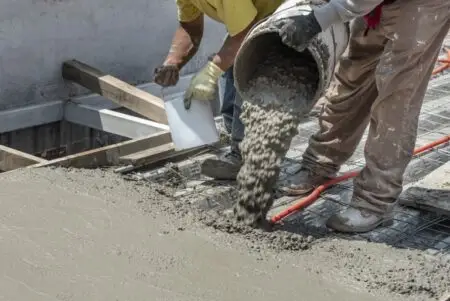Gov. Ned Lamont, U.S. Sen. Chris Murphy and many local officials from across Connecticut gathered in Hartford Nov. 17 to highlight the array of new infrastructure projects that are currently under way in the state and to discuss what other changes residents are likely to see in the next decade and beyond.
But amid the calls to boost Connecticut’s transportation and energy infrastructure, officials focused their discussions on one aspect of infrastructure growth: housing.
CT Mirror reported that the gathering was billed as the first inaugural infrastructure summit, meant to lay out a roadmap about what investments the state is likely to make between now and 2035.
Scheduled to coincide with the two-year anniversary of the passage of the 2021 federal Bipartisan Infrastructure Law, the event included mayors, first selectmen, state lawmakers, state agency leaders, economic development officials and private developers.
It featured several panels that provided an overview of the investments that were being made as a result of the federal law, which authorized more than $1.2 trillion in infrastructure spending in the United States.
To date, more than $6 billion in federal infrastructure spending has been announced for Connecticut.
Mark Boughton, commissioner of the Connecticut Department of Revenue and Services, and Lamont’s senior advisor on infrastructure, said the state is focusing on winning additional competitive grants from federal agencies.
“We here in Connecticut take its implementation very seriously,” Boughton told CT Mirror.
Murphy, who is seeking his third term in the U.S. Senate, joked that there were so many infrastructure projects under construction that fellow Democratic U.S. Sen. Richard Blumenthal was not able to keep up.
“There are so many ribbon cuttings in Connecticut these days that Blumenthal can only make half of them,” Murphy quipped.
Even with all of the federal funding arriving in Connecticut and other states, Murphy argued that Congress needed to do even more to improve the country’s energy, water and transportation infrastructure.
He noted, for instance, that China was able to build a high-speed railway from Beijing to Shanghai, despite the distance between those two cities being double the mileage between Boston and Washington, D.C.
“This is not a moment for us to rest on our laurels,” Murphy said.
Many of the other speakers at the event, however, were focused on projects that are already in the works.
The panelists and attendees talked broadly about investing in water and sewer systems, rebuilding Connecticut’s bridges, reengineering highway exchanges, constructing new rail stations, installing electrical vehicle charging stations, speeding up the passenger rail between New Haven and New York, and preparing the state for the future effects of climate change.
Increased Housing Stocks Key to State’s Economy
But the most prominent topic of discussion was housing — a vital but politically fraught issue at the moment.
Lamont, who is in his second term as governor, and many other speakers voiced the need to build new housing stock in Connecticut, a state with one of the lowest vacancy rates for apartments in the country.
Along with Daniel O’Keefe, the new nominee to become the commissioner of the state Department of Economic and Community Development, Lamont emphasized that housing is a vital piece of Connecticut’s infrastructure. They added that it was a necessity for the state’s continued economic development, which is why they highlighted the millions of dollars in funding that has gone toward new housing.
“We are doing everything we can to build housing,” the governor explained.
Lamont, however, continued to show deference toward the Connecticut municipalities where local zoning ordinances have been used to block new developments in recent years.
“For the towns, we are following [their] lead,” he said during one of the panel discussions.
Housing advocates in the state have said those zoning laws — and the local opposition to multifamily housing developments — are likely the biggest impediment to Connecticut solving its housing crisis and boosting the number apartments and homes that are available to lower-income households.
Lamont recognized the pushback that developers have faced in many suburban municipalities when trying to build multifamily housing. He joked that in his hometown of Greenwich, he has seen yard signs suggesting that state lawmakers want to build the Empire State Building on Greenwich Avenue.
Additionally, the governor asked several of the panelists how they were able to plan and build more multifamily housing when faced with that type of resistance.
West Hartford Mayor Shari Cantor said she has been able advance home building in her community by explaining to residents that it was necessary for the town’s growth and economic development.
But Cantor said that does not mean that the entire community supported all of the housing developments. As an example, Cantor noted, she was meeting with several town residents later in the day on Nov. 17 who are opposed to one of the newly proposed housing construction projects currently in the planning stages in West Hartford.
Jocelyn Ayer, the director of the Litchfield County Center for Housing Opportunity, also spoke to her experiences in trying to counter local resistance toward building new housing in Connecticut’s northwest corner.
“When we talk to towns about where they can locate new housing, they shrug,” she said.
Ayer counters told CT Mirror that she responds by pointing to old parking lots or vacant school properties that could be developed into multifamily housing.
“We can turn those into community assets,” she explained.
Read the full article here











